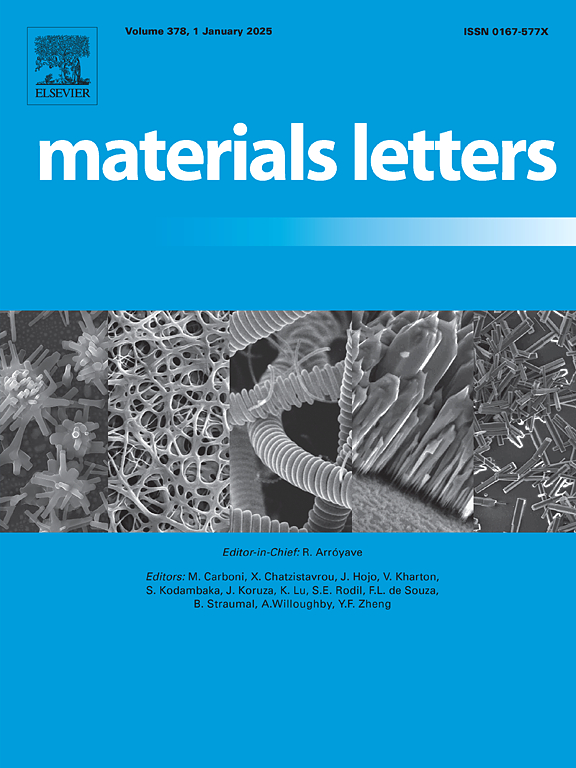Influence of heat input on the interfacial characteristics of SS316L-In718 bi-metallic deposition for wire arc additive manufacturing
IF 2.7
4区 材料科学
Q3 MATERIALS SCIENCE, MULTIDISCIPLINARY
引用次数: 0
Abstract
This study examined the influence of heat input (HI) on the intermetallic width (IMW), diffusion length (DL), texture and hardness at the SS 316L–In 718 interface. In the SS–Ni interface, FeNi and FeNi3 were identified. At 360 J/mm of heat input, the IMW was 2.241 µm and the DL 4.875 µm, whereas, at 150 J/mm, these values dropped to 0.239 µm and 2.441 µm, respectively. High HI increases the intermetallic phase fraction. The interface exhibits a finer, more uniform microstructure with a strong Brass({110} < 112 > ) and S({123} < 634 > ) texture and significantly higher fractions of both low‐angle and special Σ3 boundaries at lower HI compared to the higher HI. The average micro-hardness increased from 166.27 to 194.76 HV with decreasing heat input.
热输入对丝弧增材制造SS316L-In718双金属沉积界面特性的影响
研究了热输入(HI)对ss316l - in718界面金属间宽度(IMW)、扩散长度(DL)、织构和硬度的影响。在SS-Ni界面中,鉴定出FeNi和FeNi3。当热输入为360 J/mm时,IMW为2.241µm, DL为4.875µm,而当热输入为150 J/mm时,IMW和DL分别降至0.239µm和2.441µm。高HI增加了金属间相分数。界面呈现出更精细、更均匀的微观结构,具有强黄铜({110}<;112 >)和S({123} <;634 >)与高HI相比,低HI下的低角度和特殊Σ3边界的比例明显更高。随着热输入的减少,平均显微硬度从166.27 HV增加到194.76 HV。
本文章由计算机程序翻译,如有差异,请以英文原文为准。
求助全文
约1分钟内获得全文
求助全文
来源期刊

Materials Letters
工程技术-材料科学:综合
CiteScore
5.60
自引率
3.30%
发文量
1948
审稿时长
50 days
期刊介绍:
Materials Letters has an open access mirror journal Materials Letters: X, sharing the same aims and scope, editorial team, submission system and rigorous peer review.
Materials Letters is dedicated to publishing novel, cutting edge reports of broad interest to the materials community. The journal provides a forum for materials scientists and engineers, physicists, and chemists to rapidly communicate on the most important topics in the field of materials.
Contributions include, but are not limited to, a variety of topics such as:
• Materials - Metals and alloys, amorphous solids, ceramics, composites, polymers, semiconductors
• Applications - Structural, opto-electronic, magnetic, medical, MEMS, sensors, smart
• Characterization - Analytical, microscopy, scanning probes, nanoscopic, optical, electrical, magnetic, acoustic, spectroscopic, diffraction
• Novel Materials - Micro and nanostructures (nanowires, nanotubes, nanoparticles), nanocomposites, thin films, superlattices, quantum dots.
• Processing - Crystal growth, thin film processing, sol-gel processing, mechanical processing, assembly, nanocrystalline processing.
• Properties - Mechanical, magnetic, optical, electrical, ferroelectric, thermal, interfacial, transport, thermodynamic
• Synthesis - Quenching, solid state, solidification, solution synthesis, vapor deposition, high pressure, explosive
 求助内容:
求助内容: 应助结果提醒方式:
应助结果提醒方式:


